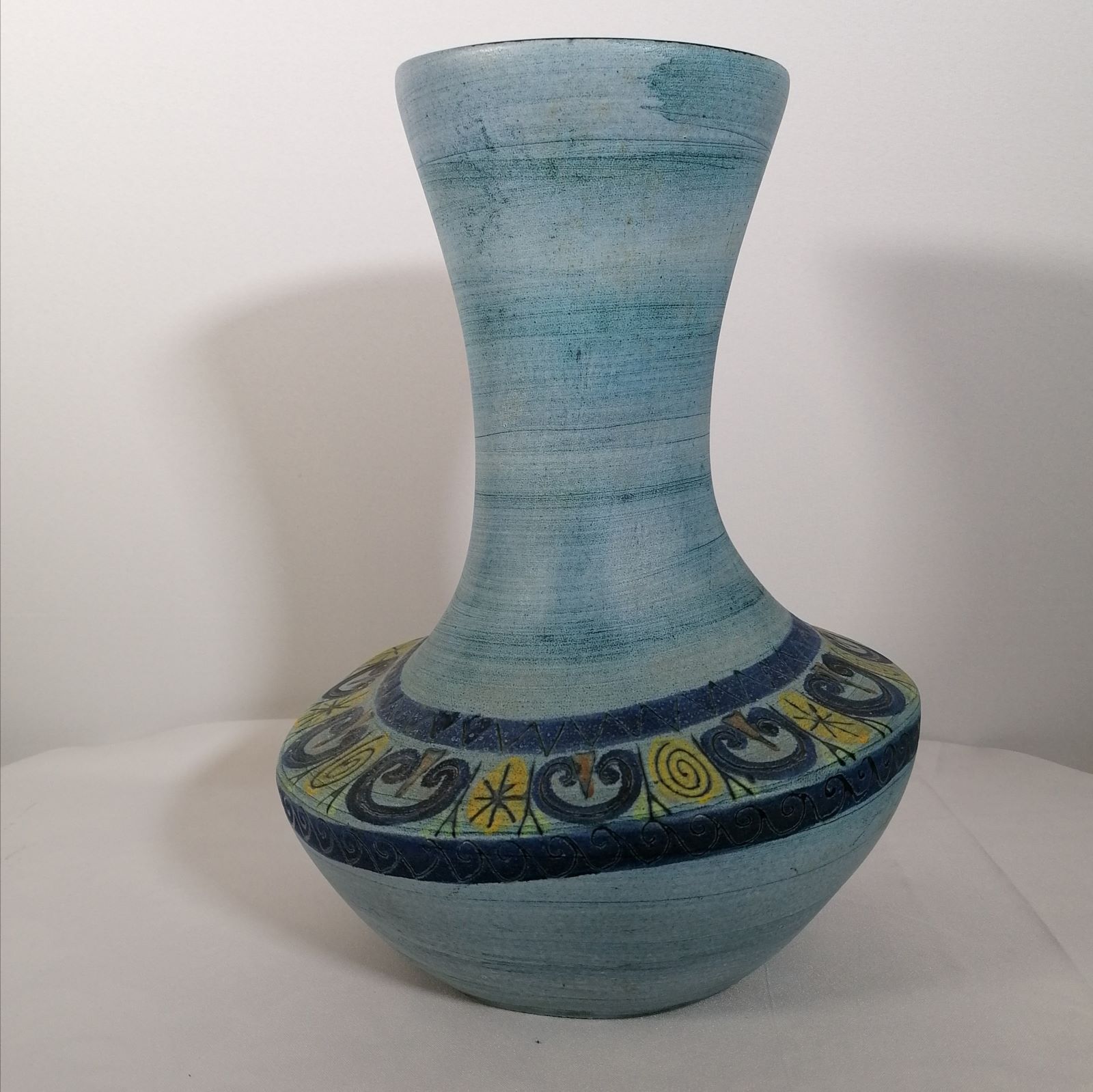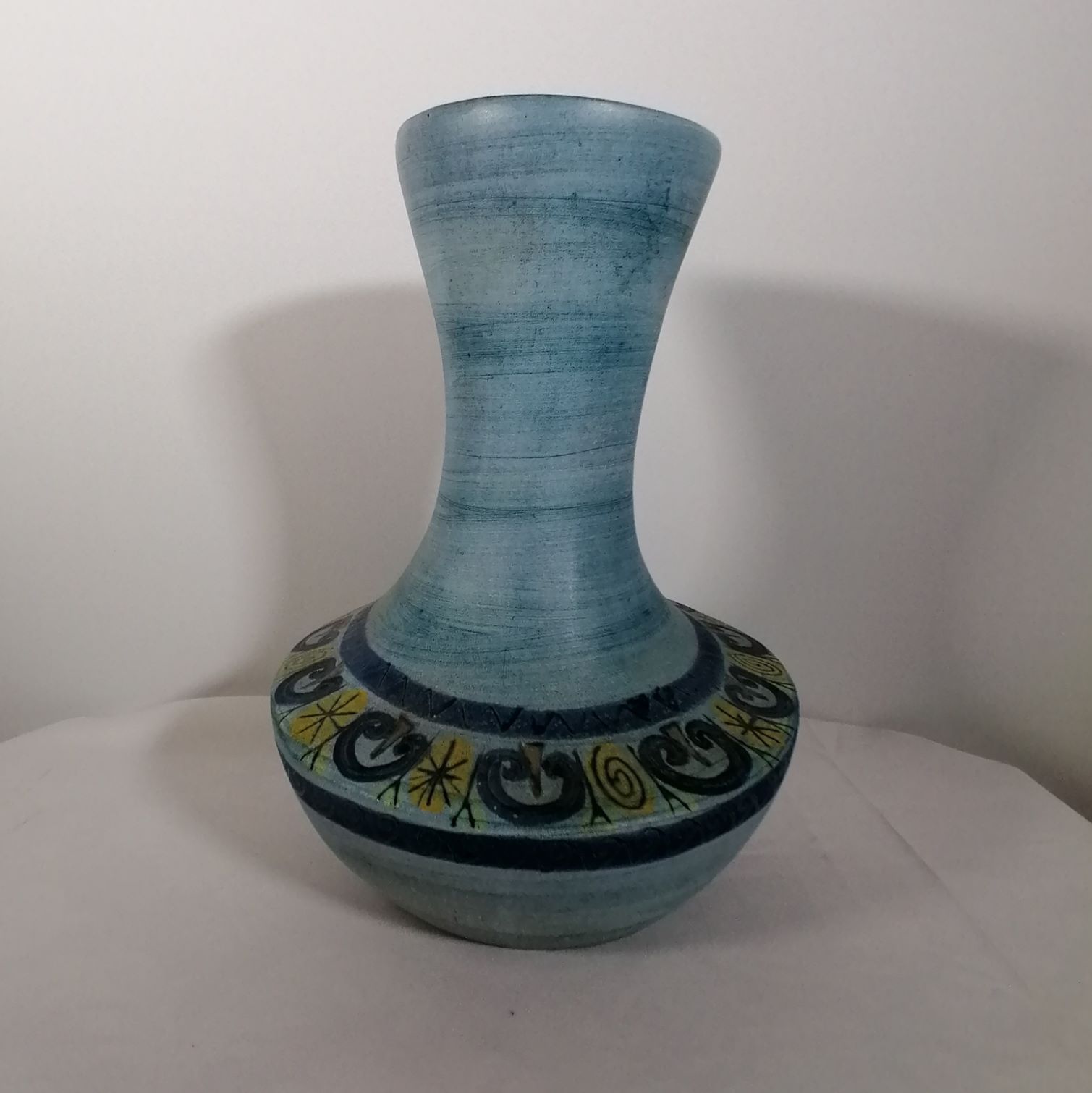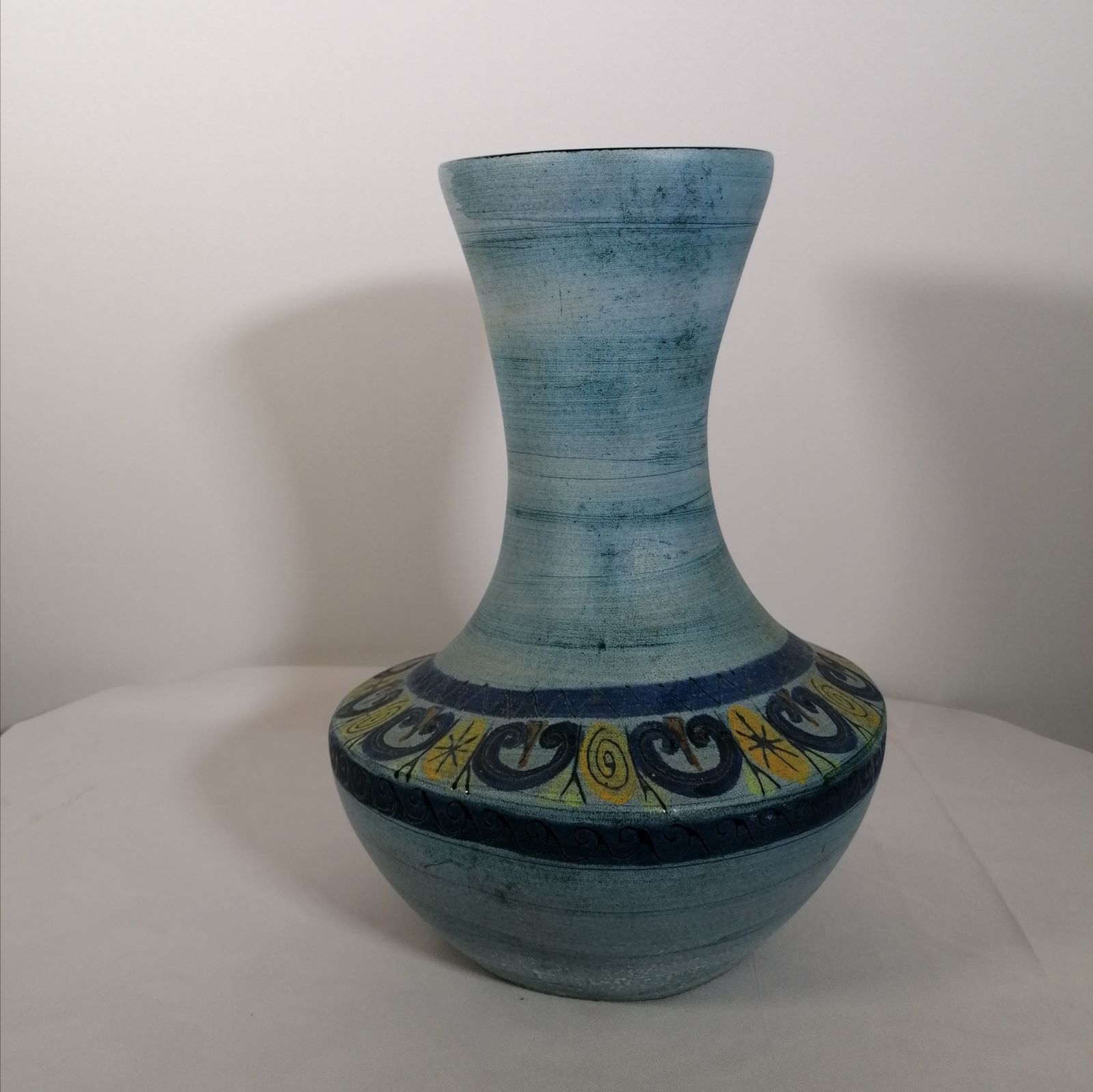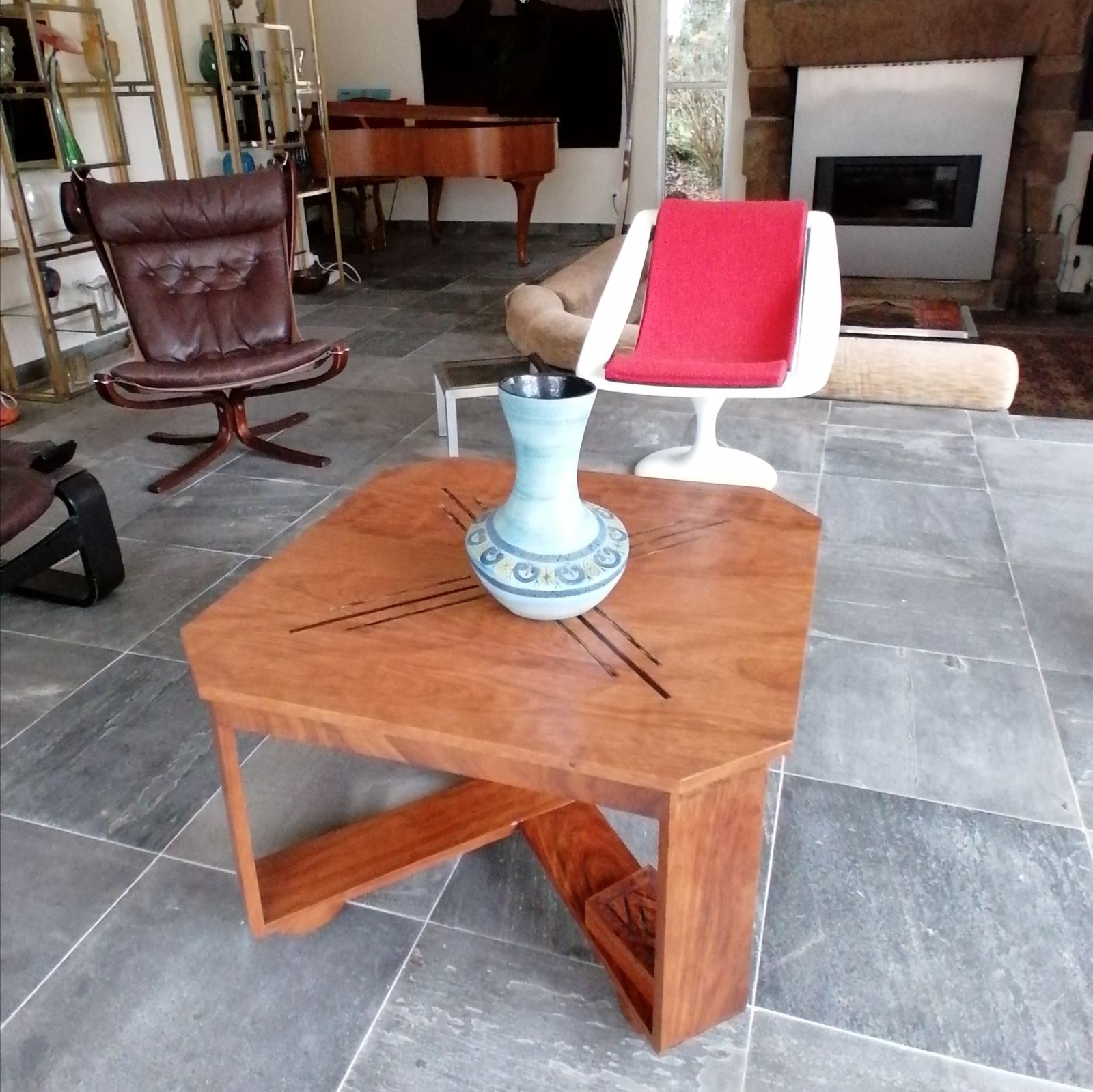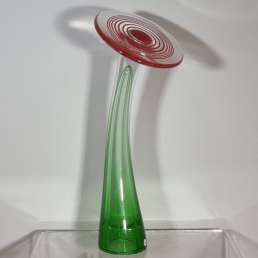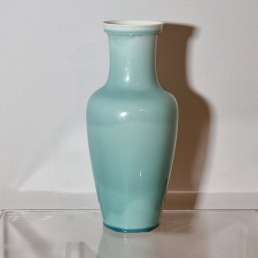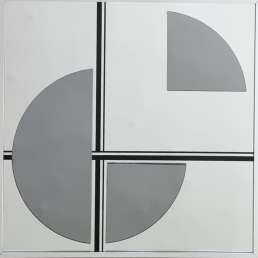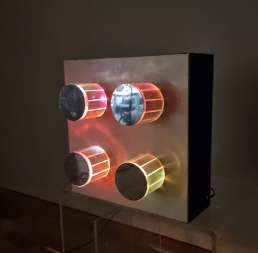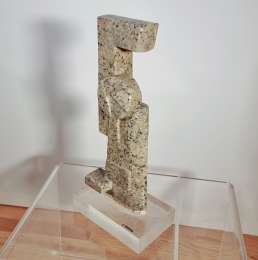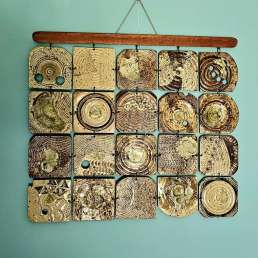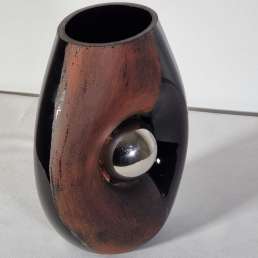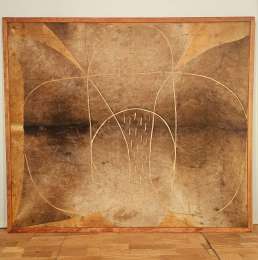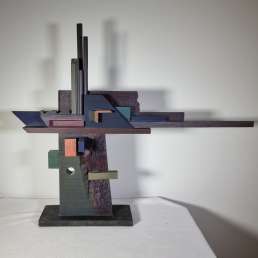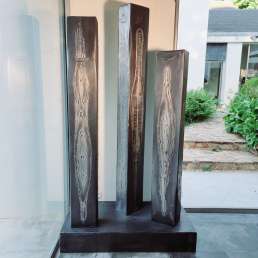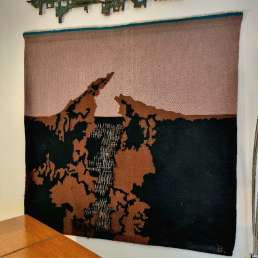Jean de Lespinasse ceramic 860 vase
Description
What I like
I like the ceramic material fully mastered by the Jean de Lespinasse workshop:
-first of all, the asymmetrical baluster shape, of course, but with the hollow out of the shoulder, which gives it a very particular silhouette; this asymmetrical shape is stunning.
-then, the beautiful blue of the background, not uniform but subtly worked;
-especially the circular pattern of the frieze, but slightly inclined, which gives an impression of slight imbalance, of controlled movement.
I love the very 1960 side of this exceptional piece, its large size, which allows it to exist as a polychrome sculpture: it is no longer a utilitarian, artisanal object, but a work of art.
Technical description
Asymmetrical baluster-shaped 860 vase with flattened belly in light blue earthenware underlined with a register of geometric patterns, the interior black enamelled.
Monogrammed under the base and numbered 860
13 proofs of this vase have been listed by Catherine Sagues, the artist’s granddaughter: a plain red, 4 blue with a frieze of hearts, an orange with scales and 7 scarified black with a red interior. The decorations are handmade so slightly different, even according to the same model
Dimensions and weight
Height: 32 cm- Width: 23cm- Depth : 23 cm
Weight: 2 kg
Mix & Match
This vase-sculpture can be used as a vase if you wish, but above all as a work of art. Its range of colors, quite limited and very refined, allows it to be placed in any type of decor.
I can see it fairly well enthroned on the coffee table by Juliette Belarti alias Julien de Covemaeker with its abstract decor and also in ceramic, but also animate the white table in the Orsay living room by Gae Aulenti: its color and its shape, modest but very original, will be magnified by the same rigor of line.
We can even present it on the shelf of the floor lamp by Mado Jollain- ceramist- and René Legrand- ironworker-: same period, another approach to rigor associated with fantasy.
But this work of art can very well be placed on a Louis XVI or Empire chest of drawers, especially in mahogany or uniform veneer: here too, its modest rigor will flourish with pleasure. The quality of its manufacture will enhance that of the furniture of bygone times.
In stock
Description
To know more
The artist
Jean de Lespinasse or JdL, born in 1896 in Bréhat (Côtes d´Armor) and died in 1979 in Nice, is a French ceramist.
Resistant during the Second World War, Jean de Lespinasse set up a local craft company at the end of the war and then created SOCFRA with his wife, which produced ceramics from the end of the 1940s. Their path crossed that of Roger Capron and his wife Jacotte, from the Madoura, Robert Picault or Georges Tardieu workshops.
The ceramic workshop, located in the Cimiez district of Nice employs around ten people (casting parts, baking cookies, decorating enamelling, baking, etc.). The ceramics are sold in shops on the Côte d´Azur, then throughout France and abroad, as well as at the Foires de Lyon or at the Salon des arts du feu in Paris.
The workshop also rents out shops during the summer in Sainte Maxime (1958-1961), Saint Paul de Vence and Vallauris, which explains the mention of Vallauris under certain pieces, possibly made in Nice. The pieces generally bear the initials JdL as well as a number that corresponds to the catalog that Lespinasse and his son-in-law, Jean Saguès, used to present their collection after each show.
Workshop activity ceases upon the death of the founder.
The pieces signed by the workshop are generally large, edgy and very structured. Above all, there is a great deal of work in enamel, between matt and shiny, which demonstrates a great mastery of the art of ceramics.
A nice authentic vase at a fair price
This vase has been carefully selected for its aesthetic qualities, its originality and its fair price. Our choice privileges above all the freshness of this work of art, pledge of an enhancement of your new acquisition in your interior and of a faculty to dialogue with your furniture, to agree and to mix to create a unique decoration. .
Buying a vintage piece of art is surely a reasonable investment, so great is the appetite for the 1970s and 1980s.
Finally, buying a vintage work preserves the resources of planet earth.
Additional information
| Weight | 2 kg |
|---|---|
| Dimensions | 23 × 23 × 32 cm |
| Créateur | |
| Epoque | |
| Matières |


